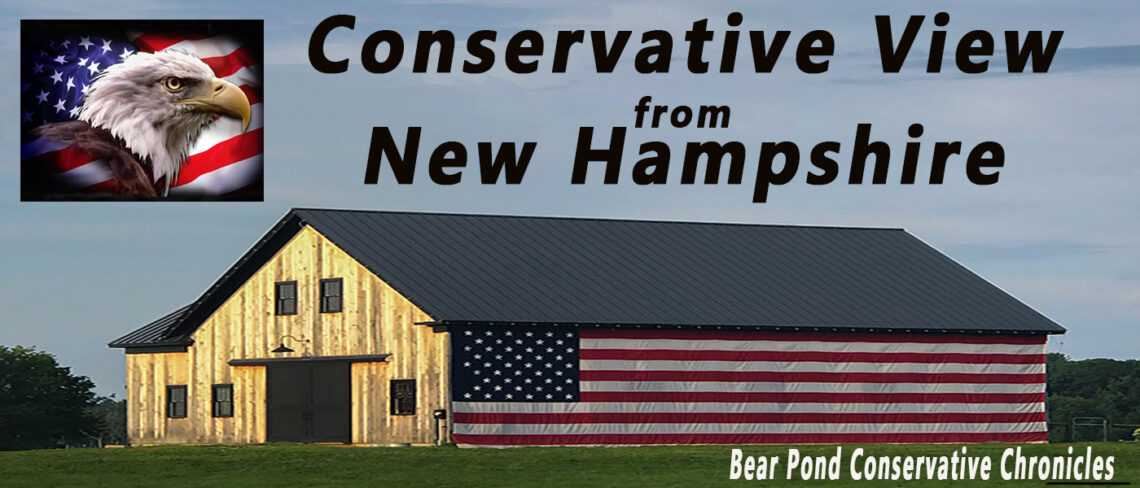
By Ray Cardello for September 30, 2021 Season 6 / Post 10
I realize that if you say something often enough and loud enough, the masses will buy it. But how often must it be to believe the Democrat talking point that the $3.5 Trillion Infrastructure Spending bill is “fully paid for” and will not impact the debt? Nothing can happen that often. This talk is pure gaslighting and lies. This Liberal Wishlist has been discussed since the campaign and grows with time. That is why it is $3.5 now, but most experts say it will cost $5.0 or more. We cannot afford either scenario, and both would cost real money to pay for.
This bill started as Infrastructure but had so many items added that even the Libs could not connect to Infrastructure that they decided to call it a Spending Bill. That covers everything.

Policy analyst Brad Polumbo highlighted some of the examples at FEE.org.
1. $10 Billion to Create a ‘Civilian Climate Corp’
The Biden administration proposes spending $10 billion to create a “Civilian Climate Corp.” The White House claims that “This $10 billion investment will put a new, diverse generation of Americans to work conserving our public lands and waters, bolstering community resilience, and advancing environmental justice through a new Civilian Climate Corps.”
2. $20 Billion to ‘Advance Racial Equity and Environmental Justice’
The proposal sets aside a whopping $20 billion—more than the latest COVID package spent on vaccines—for “a new program that will reconnect neighborhoods cut off by historic investments and ensure new projects increase opportunity, advance racial equity and environmental justice, and promote affordable access.”
3. $175 Billion in Subsidies for Electric Vehicles
Electric vehicles: A technological novelty so good it won’t catch on without hundreds of billions in subsidies. At least, that’s apparently what the Biden administration thinks, as its infrastructure proposal earmarks a “$174 billion investment to win the electric vehicle market.”
The spending will take the form of manufacturing subsidies and consumer tax credits, which historically have benefitted wealthy families most. For comparison, the proposal carves out more for green energy goodies than it does on the total $115 billion to “modernize the bridges, highways, roads, and main streets that are in most critical need of repair.”
4. $213 Billion to Build/Retrofit 2 Million Houses & Buildings
When most people hear “infrastructure,” they think of roads, bridges, tunnels, and so on. But the Biden administration’s definition of the term is Olympian-gymnastics-level flexible. Apparently, the president considers it “infrastructure spending” to allocate $213 billion to build or retrofit 2 million “sustainable” houses and buildings. They also slip in $40 billion for public housing, stating this will “disproportionately benefit women, people of color, and people with disabilities.”
5. $100 Billion for New Public Schools and Making School Lunches ‘Greener’
You might remember that the last “COVID” legislation had $128.5 billion in taxpayer dole-outs for public schools; much of the money will be spent years after the pandemic and there was no requirement that schools actually open. Yet this was, evidently, just the beginning. The Biden “infrastructure” plan includes another “$100 billion to upgrade and build new public schools.”
“Funds also will be provided to improve our school kitchens, so they can be used to better prepare nutritious meals for our students and go green by reducing or eliminating the use of paper plates and other disposable materials,” the proposal reads. (Emphasis mine).
6. $12 Billion for Community Colleges
One generally thinks of infrastructure and higher education as separate, distinct sectors. Yet the Biden “infrastructure” plan slips in $12 billion for states to spend on community colleges.
7. Billions to Eliminate ‘Racial and Gender Inequities’ in STEM
The proposal includes several billion dollars allocated to reduce supposed “racial and gender inequities” in Science, Technology, Engineering, and Math (STEM) research and development.
What this has to do with interstate infrastructure is not adequately explained.
8. $100 Billion to Expand Broadband Internet (And Government Control of It)
Loosely lumped under the broad term “digital infrastructure,” the plan allocates $100 billion to “bring affordable, reliable, high-speed broadband to every American.” Interestingly, the proposal openly states that it wishes to promote government and NGO control of broadband and push out private sector providers: It “prioritizes support for broadband networks owned, operated by, or affiliated with local governments, non-profits, and co-operatives—providers with less pressure to turn profits.”
9. $25 Billion for Government Childcare Programs
The plan includes $25 billion “to help upgrade child care facilities and increase the supply of child care in areas that need it most.” According to the White House, “funding would be provided through a Child Care Growth and Innovation Fund for states to build a supply of infant and toddler care in high-need areas.”
There are thousands of line items in the joint spending spree. This is a golden situation that the Democrats saw as their opportunity to push everything they could conjure while holding all the power in DC. They are finding they do not have the power they envisioned. The White House is weakened by its performance in eight months. The House has only a six-vote buffer for the Dems, and Moderate Democrats are tipping the scale. The Senate is 50-50, with Kamala Harris as the deciding vote, but Senators like U.S. Sens. Kyrsten Sinema, D-Ariz., and Joe Manchin, D-W.Va., still believe the country deserves bipartisan thinking.
The Left claims this bill can be funded by new taxes levied on the richest of individuals and corporations. There are not enough of either. It will not pass under the current rules of Congress but that is why the Democrats are trying to change the rules. We have to keep an eye on them. We have to stop them. Period.
Categories: Uncategorized

